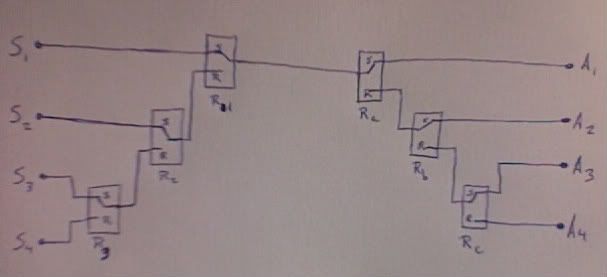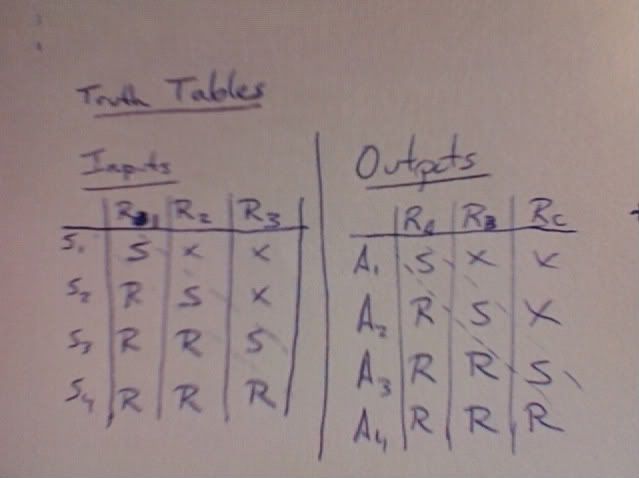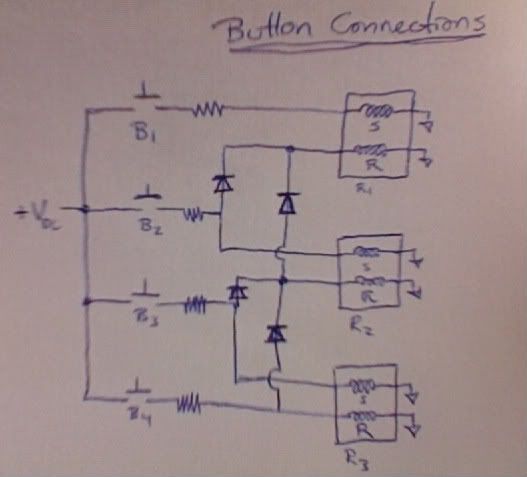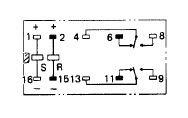scompton
Headphoneus Supremus
- Joined
- Jan 21, 2005
- Posts
- 6,060
- Likes
- 27
Quote:
I'd appreciate it if you posted the circuit. From what I've read, this is an ideal first DIY project.
| Originally Posted by dgbiker1 /img/forum/go_quote.gif You could get something like this too: Amazon.com: VIDEO/AUDIO SWITCH BOX - 4-IN-2 OUTPUT: Home Improvement The only thing I'm wondering is if you're okay with moving your headphones between amps? You could also switch that too 
But you can still use switches and relays to achieve what you want. I have a circuit layout at home that consists only of relays and buttons that I could post if you want. In my case it fed three speakers from one amp, but adding multiple inputs should be easy if I think about it a little bit. The nice thing about the design is it was a modular branch so I can easily add a relay to the end of my circuit to add another output/input. |
I'd appreciate it if you posted the circuit. From what I've read, this is an ideal first DIY project.








